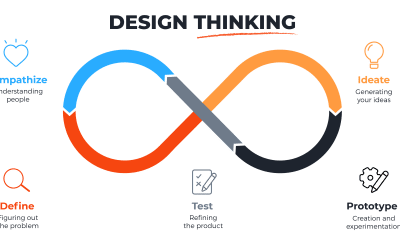Skim pricing is a pricing strategy in which a company sets a high initial price for a product or service, and then gradually lowers the price over time. This strategy is often used when introducing a new product or when there is a high level of demand for a product or service. The goal of skim pricing is to maximize profit by capturing the maximum amount of revenue from customers who are willing to pay the highest price.
To implement skim pricing, a company will typically set a high initial price for a product or service, and then gradually lower the price over time as demand for the product decreases or as competitors enter the market. For example, a company might launch a new smartphone at a high price and then gradually reduce the price over the next six months as demand for the phone decreases and as new models are released.
The effectiveness of skim pricing depends on several factors, including the level of demand for the product, the level of competition in the market, and the ability of the company to adapt to changing market conditions. Skim pricing can be a successful strategy in the short term, but it may not be sustainable in the long term if competitors enter the market with lower prices or if customers become resistant to the high initial price.
Why is it called “skim pricing”?
Skim pricing is called skim pricing because it involves setting a high initial price for a product or service and then “skimming” the maximum amount of revenue from customers who are willing to pay the high price. The term “skim” refers to the process of taking a small amount of profit from a large number of transactions, and it is used to describe the way that companies can maximize their profits by charging a high initial price and then gradually reducing the price over time.
Skim pricing is an effective pricing strategy because it allows companies to capture the maximum amount of revenue from customers who are willing to pay the highest price, and then gradually reduce the price as demand decreases and as new models or competitors are introduced. This allows companies to maximize their profits in the short term, and to test the market to see how much customers are willing to pay for their products or services.
Overall, skim pricing is called skim pricing because it involves setting a high initial price for a product or service and then “skimming” the maximum amount of revenue from customers who are willing to pay the high price. The term “skim” refers to the process of taking a small amount of profit from a large number of transactions, and it is used to describe the way that companies can maximize their profits by charging a high initial price and then gradually reducing the price over time.
The benefits and drawbacks of skim pricing
Skim pricing can offer several benefits for companies, including:
- Maximizing profit: By setting a high initial price for a product or service, a company can capture the maximum amount of revenue from customers who are willing to pay the highest price. This can help the company to maximize its profits in the short term.
- Generating buzz: Skim pricing can generate interest and buzz around a new product or service by creating the impression that the product is exclusive or luxury, which can attract customers who are willing to pay a premium for the product. In addition, by gradually reducing the price over time, the company can create a sense of urgency and scarcity, which can drive demand for the product.
- Testing the market: By setting a high initial price for a product or service, a company can test the market to see how much customers are willing to pay. This can provide valuable information that the company can use to adjust its pricing strategy in the future.
However, skim pricing also has some potential drawbacks, including:
- Losing customers: By setting a high initial price for a product or service, a company may lose customers who are not willing to pay the high price. This can result in lower sales and revenue in the short term.
- Creating resentment: Skim pricing can create resentment among customers who feel that they are being charged a high price for a product or service. This can damage the company’s reputation and make it difficult to retain customers in the long term.
- Encouraging competition: Skim pricing can attract competitors who are willing to offer a lower price to customers. This can lead to a price war, which can reduce profit margins and make it difficult for the company to maintain its high initial price.
- Losing flexibility: By setting a high initial price for a product or service, a company may lose flexibility in its pricing strategy. If the market changes or if competitors enter the market with lower prices, the company may not be able to quickly adjust its pricing to remain competitive.
Examples of skim pricing in action
Some examples of companies that have successfully used skim pricing:
- Apple: Apple is well-known for using skim pricing to launch its new products, such as the iPhone and iPad. When these products were first introduced, Apple set a high initial price for the products, and then gradually reduced the price over time as demand for the products decreased and as new models were released. This strategy helped Apple to maximize its profits and establish a reputation for offering high-quality, luxury products.
- Tesla: Tesla uses skim pricing to generate interest and buzz around its electric vehicles. When Tesla first introduced its electric cars, the company set a high initial price for the cars, and then gradually reduced the price over time as demand for the cars decreased and as new models were released. This strategy helped Tesla to generate interest and buzz around its electric cars, and it also allowed the company to maximize its profits from customers who were willing to pay the high initial price.
- Microsoft: Microsoft also uses skim pricing to launch its new products, such as the Xbox and Surface Pro. The company sets a high initial price for its new products and then gradually reduces the price over time as demand decreases and as new models are released. For example, when the Xbox Series X was released in 2020, it was priced at $499, and the price was gradually reduced over the next several months as demand for the console decreased and as new models were introduced.
These examples show how skim pricing can be a successful strategy for companies that are launching a new product or service, or that have a high level of demand for their product or service. By setting a high initial price and then gradually reducing the price over time, these companies were able to generate interest and buzz around their products, and they were also able to maximize their profits.
Industries and products well-suited to skim pricing
Industries and products that are well-suited to skim pricing include:
- Technology: The technology industry is often well-suited to skim pricing because of the rapid pace of innovation and the high level of competition. Companies in this industry, such as Apple and Microsoft, often use skim pricing to launch new products, such as smartphones, laptops, and gaming consoles.
- Luxury goods: The luxury goods industry is also well-suited to skim pricing because of the high prices and the exclusivity of the products. Companies in this industry, such as Louis Vuitton and Gucci, often use skim pricing to launch new products, such as clothing, accessories, and fragrances.
- Automobiles: The automobile industry is also well-suited to skim pricing because of the high initial price of cars and the rapid pace of innovation. Companies in this industry, such as Tesla and Mercedes-Benz, often use skim pricing to launch new models of cars, and then gradually reduce the price over time as demand decreases and as new models are introduced.
These industries and products are well-suited to skim pricing because they have high initial prices, rapid innovation, and high levels of competition, which make them ideal for capturing the maximum amount of revenue from customers who are willing to pay the high initial price.
Customer impact of skim pricing
Skim pricing can affect customer behavior and purchasing decisions in several ways. Here are some examples of how skim pricing can influence customer behavior:
- Early adoption: By setting a high initial price for a product or service, a company can encourage customers to adopt the product early in order to take advantage of the high price. This can drive demand for the product and help the company to maximize its profits in the short term.
- Price sensitivity: Skim pricing can also make customers more price sensitive, as they may be more likely to wait for the price to decrease before purchasing the product. This can reduce demand for the product in the short term, but it can also increase demand when the price is reduced.
- Comparison shopping: Skim pricing can also encourage customers to compare prices and look for the best deals. Customers may be more likely to compare prices with competitors or wait for sales or discounts before purchasing the product.
Skim pricing can affect customer behavior and purchasing decisions in a number of ways, including encouraging early adoption, increasing price sensitivity, and encouraging comparison shopping.
Market and competitor impact of skim pricing
The impact of skim pricing on competition and the market depends on several factors, including the level of demand for the product, the level of competition in the market, and the ability of the company to adapt to changing market conditions. Here are some potential impacts of skim pricing on competition and the market:
- Higher profits for the company: Skim pricing can help a company to maximize its profits in the short term by capturing the maximum amount of revenue from customers who are willing to pay the high initial price. This can give the company a competitive advantage in the market and help it to generate revenue and growth.
- Higher prices for customers: Skim pricing can also result in higher prices for customers, as they may be required to pay a higher initial price for a product or service. This can make the product or service less affordable for some customers, which can limit demand and sales.
- Increased competition: Skim pricing can also attract competitors who are willing to offer a lower price to customers. This can lead to a price war, which can reduce profit margins and make it difficult for the company to maintain its high initial price.
- Market saturation: Skim pricing can also lead to market saturation, as the company may be unable to sustain the high initial price over the long term. This can result in lower demand and sales, which can make it difficult for the company to maintain its market share and profitability.
The impact of skim pricing on competition and the market depends on the specific market and product, and can vary depending on the level of demand, competition, and market conditions.
Alternatives to skim pricing
Here are some other pricing strategies that companies can use besides skim pricing:
- Penetration pricing: Penetration pricing is a pricing strategy in which a company sets a low initial price for a product or service in order to quickly gain market share. The goal of penetration pricing is to attract customers by offering a lower price than competitors, and then gradually increase the price over time as demand increases and as the company gains market share.
- Value-based pricing: Value-based pricing is a pricing strategy in which a company sets the price of a product or service based on the perceived value that it offers to customers. The goal of value-based pricing is to match the price of the product or service to the value that it provides to customers, in order to maximize profit and customer satisfaction.
- Dynamic pricing: Dynamic pricing is a pricing strategy in which a company adjusts the price of a product or service in real-time based on factors such as supply and demand, competition, and market conditions. The goal of dynamic pricing is to respond to changes in the market and customer behavior in order to maximize profit and remain competitive.
These pricing strategies offer alternative approaches to skim pricing, and can be effective in different market conditions and for different products and services.
Key considerations when evaluating a skim pricing strategy
Here are some key considerations for companies considering skim pricing:
- Demand for the product: Skim pricing is most effective when there is a high level of demand for a product or service. If there is low demand for the product, skim pricing may not be able to generate enough revenue to offset the high initial price.
- Level of competition: Skim pricing can also be affected by the level of competition in the market. If there are many competitors offering similar products at lower prices, skim pricing may not be effective in generating sales and revenue.
- Ability to adapt to market changes: Skim pricing can be successful in the short term, but it may not be sustainable in the long term if the market changes or if competitors enter the market with lower prices. It is important for companies to monitor market conditions and customer behavior, and to be able to adapt their pricing strategy in response to changes in the market.
- Customer perception: Skim pricing can also be affected by customer perception. If customers perceive the high initial price as unfair or unreasonable, they may be less likely to purchase the product, which can reduce demand and sales. It is important for companies to carefully consider the impact of skim pricing on customer perception and to communicate the value of the product or service in order to justify the high initial price.
These key considerations should be taken into account when considering skim pricing as a pricing strategy.
Monitoring and adapting to market behavior while using skim pricing
Monitoring and adapting to changes in the market and customer behavior are important when using skim pricing because skim pricing is a dynamic and responsive pricing strategy. Skim pricing involves setting a high initial price for a product or service and then gradually reducing the price over time as demand decreases and as new models or competitors are introduced. This means that the effectiveness of skim pricing can change over time, and it is important for companies to monitor market conditions and customer behavior in order to make the necessary adjustments to their pricing strategy.
For example, if the demand for a product decreases or if new competitors enter the market with lower prices, the company may need to reduce the price of its product in order to remain competitive. Similarly, if the demand for a product increases or if the market conditions change, the company may need to adjust its pricing strategy in order to maximize its profits and maintain its market share.
Overall, monitoring and adapting to changes in the market and customer behavior is important when using skim pricing because it allows companies to respond to changes in the market and maintain their competitive advantage. By monitoring market conditions and customer behavior, companies can make the necessary adjustments to their pricing strategy in order to remain competitive and maximize their profits.










